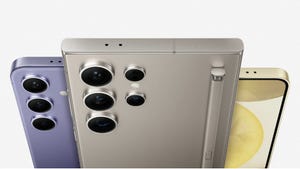Swedish kit vendor Ericsson has continued its shuffle towards a commoditized, open Radio Access Network by using Intel chips to do its mid-band 5G computing.
June 22, 2021

Swedish kit vendor Ericsson has continued its shuffle towards a commoditized, open Radio Access Network by using Intel chips to do its mid-band 5G computing.
The broader announcement concerns support for mid-band spectrum by the Ericsson Cloud RAN portfolio, which was launched last year. At the time it seemed to represent a symbolic concession by Ericsson that the telecoms industry is evolving away from the closed RAN stack that forms much of its business model and today’s embrace of a third-party component vendor would is another such moment.
‘A high-performing mid-band 5G deployment requires 150 times more compute power than 4G,’ explained the Ericsson press release. ‘To meet the high-performance standards in 5G and beyond, Ericsson and Intel are pioneering the Cloud RAN space together.’ As this excellent recent analysis by Light Reading revealed, Intel seems to have cornered the market in OpenRAN silicon, so it’s not surprising to see Ericsson turn to Intel for help with its Cloud RAN.
”Intel’s technologies such as Xeon processors have fueled the massive growth of the cloud and are now playing a pivotal role in vRAN momentum,” said Navin Shenoy, GM of the Data Platforms Group at Intel. “Our long-standing partnership with Ericsson is entering an exciting new phase with the shared goal of unleashing richer user experiences with 5G.”
“We aim to constantly develop the best technologies by working closely with our customers,” said Fredrik Jejdling, Head of Networks at Ericsson. “We continue investing in technology to stay ahead and deliver a high-performing and cost-effective portfolio, as evidenced by our latest releases. Now we are bringing this high performance to Cloud RAN with the vision that our customers can deploy cloud-native networks, virtually everywhere, on any cloud, and server platform.“
While this is clearly the correct move by Ericsson, it does feel like yet another step towards an open, commoditized RAN world in which many of its traditional advantages are diminished. As LR once more observes, there’s no avoiding it if that’s what customers are demanding and Ericsson does at least have some differentiation with the introduction of CloudLink software that supports some backwards compatibility. Whether that sort of thing will be enough to maintain Ericsson’s margins and market share remains to be seen.
About the Author(s)
You May Also Like








.png?width=300&auto=webp&quality=80&disable=upscale)


_1.jpg?width=300&auto=webp&quality=80&disable=upscale)


.png?width=800&auto=webp&quality=80&disable=upscale)